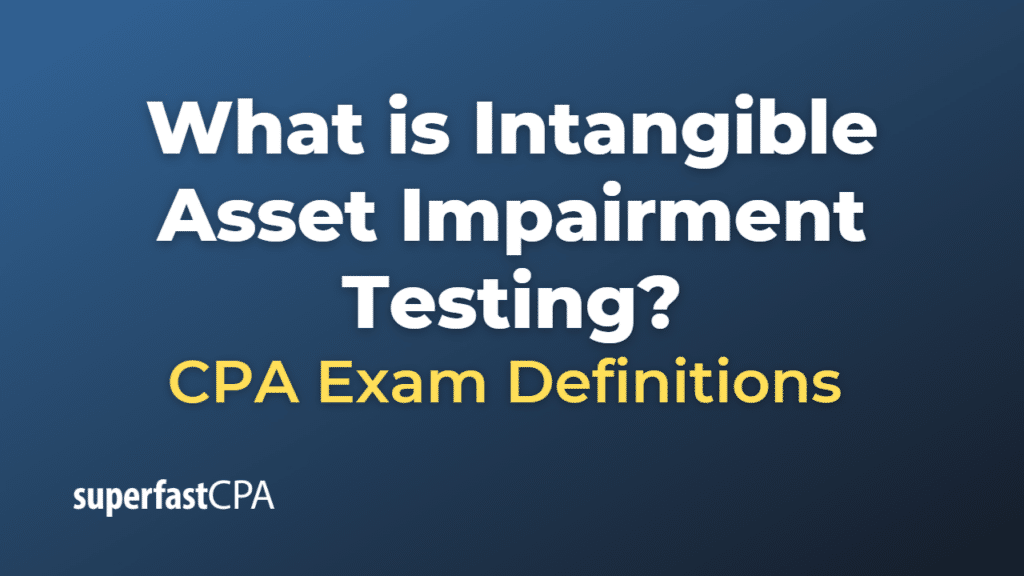Intangible Asset Impairment Testing
Intangible Asset Impairment Testing is a process companies undergo to evaluate whether the value of their intangible assets has decreased (or become impaired) over time. Intangible assets are non-physical assets that have a useful life greater than one year and typically include things like goodwill, patents, copyrights, brand recognition, and customer relationships, among others.
Under many accounting standards, such as the International Financial Reporting Standards (IFRF) and U.S. Generally Accepted Accounting Principles (U.S. GAAP), companies are required to assess their intangible assets for impairment at least annually, or more frequently if there are indicators that the asset might be impaired.
The impairment testing process typically involves:
- Identifying potential impairment indicators: This might include significant changes in market conditions, underperformance relative to historical or projected future operating results, a decision to sell or dispose the asset earlier than expected, etc.
- Testing the asset for impairment: This generally involves comparing the carrying amount of the asset (i.e., its value as recorded on the company’s books) to the asset’s recoverable amount (i.e., the higher of an asset’s fair value less costs of disposal and its value in use). If the carrying amount of the asset exceeds its recoverable amount, an impairment loss is recognized.
- Measuring the impairment loss: If an impairment loss is identified, it is typically measured as the difference between the asset’s carrying amount and its recoverable amount.
The main purpose of intangible asset impairment testing is to ensure that a company’s balance sheet accurately represents the value of its assets. By identifying and recording impairment losses, companies can avoid overstating the value of their assets, providing a more accurate picture of their financial position to investors, lenders, and other stakeholders.
Example of Intangible Asset Impairment Testing
Let’s consider an example involving a software development company.
Say this company has developed a unique software program and obtained a patent for it. This patent is an intangible asset. They initially valued this patent at $1 million based on expected future revenue from software sales.
Over the course of a few years, the software market changes. A competitor introduces a superior product, and the company’s software sales decline significantly. The company realizes that the projected future cash flows from the patented software are now much lower than initially estimated.
This change in market conditions and decline in expected cash flow are indicators of potential impairment. As a result, the company decides to conduct an impairment test on the patent.
In this test, the company compares the carrying value of the patent ($1 million) with its recoverable amount. The recoverable amount is calculated as the higher of the patent’s fair value less costs to sell and its value in use (the present value of future cash flows expected to be derived from the patent).
After conducting a fair value analysis and calculating the present value of future cash flows, the company determines the recoverable amount of the patent to be $600,000.
Because the carrying value of the patent ($1 million) exceeds its recoverable amount ($600,000), the company has to recognize an impairment loss. The impairment loss would be the difference between the carrying amount and the recoverable amount, which in this case is $400,000 ($1 million – $600,000).
The company would then record this impairment loss on their income statement and reduce the carrying value of the patent on their balance sheet to its recoverable amount of $600,000. This gives a more accurate picture of the company’s financial position and the true value of its patent.













